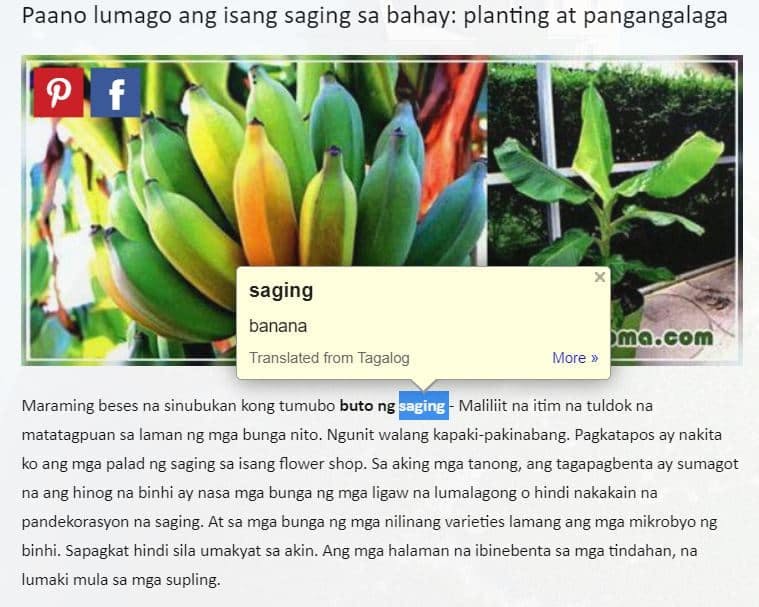Paano Gumawa ng Sanaysay (Essay)
Paano Gumawa ng Sanaysay. Ang paggawa ng mga sanaysay o essay ay tila bahagi na ng buhay ng isang estudyante. Quarterly nagpapagawa ng sanaysay si Teacher, minsan naman may mga contest tuwing buwan ng wika sa pagsulat ng sanaysay. Minsan naman, kailangan mo talagang gumawa ng sanaysay dahil requirement ito. Huhulaan ko na, nagbabasa ka ngayon kasi may dapat kang isulat na sanaysay mamaya. Don’t worry na dahil narito na ang aming tutorial kung paano gumawa ng sanaysay.


Paano gumawa ng sanaysay o essay?
Heto ang ilang guide at tips kung paano gumawa ng sanaysay:

Isulat ang iyong pangalan at mahahalagang inpormasyon
Kadalasang nagbibigay si Teacher ng format na dapat mong sundin, sundan mo ang format ng maayos at isulat ang iyong pangalan kung saan nararapat. Kung required ang date at iyong section, isulat ito. Minsan naman, kung ikaw ay contestant sa isang contest, pakinggang maiigi ang instructions ng mga dapat mong ilagay sa iyong papel.
Tamang palugid at bantas
Teka, teka. Bago ka magsulat ng isang salita, kailangan mo munang pansinin ang mga bantas at palugid sa papel. Dapat malinis ang papel na pagsusulatan mo at tuwid ang iyong palugid. Kung nahihirapan kang magsulat na tuwid ang palugid, itupi ang papel o kaya naman ay gumamit ng lapis at ruler upang markahan ang iyong palugid. Sa iyong unang talata, dapat nakaurong ang unang pangungusap mo.
Matapos mong masigurado na malinis ang iyong papel at tama ang iyong mga bantas, pwede mo nang gawin ang susunod na step.
Simulan sa pamagat
Isulat mo ang iyong pamagat sa gitna ng iyong papel, o kung sa MS Word mo ito isinusulat, siguraduhing naka-gitna ang iyong pagsulat. Ang iyong pamagat ay dapat may kinalaman sa ibinigay na paksa, dapat itong kaagaw-agaw ng pansin at ang malakas ang dating nito. Kumbaga sa isang tao, ang pamagat ay ang mukha ng iyong sanaysay. Ito ang unang makikita ng mga taong babasa ng iyong sanaysay kaya’t dapat pamagat pa lang, panalo na!

Siguraduhin ring maayos ang capitalization ng iyong pamagat. Ang mga mahahaba at importanteng mga salita ay nag-uumpisa sa malaking titik. Ang mga pangalan, pandiwa, pang-abay, pang-uri ay dapat naka-capitaliza. (Halimbawa: Juan, Naglayas, Matingkad). Ang mga maikli at di importanteng mga salita tulad ng mga inklitik (conjuctive adverbs), pangatnig (transitional devices) ay nag-uumpisa sa maliit na letra, not unless ito ang unang salita ng iyong pamagat. (Halimbawa: raw, lang, nang)
Isipin ang tema
Kadalasang nagbibigay sila ng tema o paksa na iyong isusulat. Minsan rin naman free-choice ang iyong paksa at mayroon kang kalayaang pumili ng iyong isusulat. Kung ano mang paksa ang iyong isusulat, pag-isipan itong mabuti, pag-aralan at suriin. Kung ang iyong paksa ay isang napapanahong isyu tulad ng pagtaas ng mga bilihin o environmental concerns (tulad ng mga bagyo at climate change) makabubuting magsulat ng mga inpormasyon na may layuning turuan ang iyong mga mambabasa. Kung ang iyong paksa naman ay naglalayong magpahayag ng iyong opinyon (Halimbawa: pagka-upo ng bagong pangulo, pagtaas ng sahod ng mga guro). Kung ang iyong paksa naman ay nangangailangan ng creative writing (Halimbawa: magandang lugar sa bansa, festivals).
Araling mabuti ang iyong paksa bago ka mag-umpisang magsulat. Kung binigyan ka ng free time para mag-research tungkol sa iyong topic, kunin mo ang oportunidad na ito upang makilala ang iyong paksa ng marami kang maisulat na makakabuluhang bagay sa iyong sanaysay.
Gumawa ng mabuting panimula
Sa paggawa ng sanaysay, ang unang salita o pangungusap sa iyong sanaysay ay dapat ay kaagaw-pansin rin. Ito ang pambungad ng iyong sanaysay at magbibigay ng impresyon sa iyong mga mambabasa. Siguraduhing kawili-wili at hindi nakaka-inip ang iyong unang pangungusap. Ito kasi ang unang papansinin ng iyong mga mambabasa kaya’t dapat ito ay kaagaw-agaw pansin talaga.
Alam mo bang pwede kang kumita kahit estudyante ka pa lang kahit na wala kang puhunan? Basahin mo dito:
Paano Kumita Kahit Walang Puhunan Gamit ang Coins.PH?
Isulat ang mga mahahalagang impormasyon
Sa katawan ng iyong sanaysay nakapaloob ang mga mahahalagang impormasyon at bagay na dapat mong banggitin. Iwasan mong pahabain at hilain ang iyong pagpapaliwanag dahil magiging nakakabagot ang pagbabasa ng iyong mga mambabasa. Siguraduhing ang iyong mga pagpapaliwanag ay straight to the point at hindi paligoy-ligoy, lalo na kung ang iyong sanaysay ay naglalayong magbigay-impormasyon.
Kung ang iyong sanaysay naman ay may halong kwento, siguraduhing ang bawat pangyayari sa kwento ay nakakasabik ng mga mambabasa.
Tapusin sa kaaya-ayang wakas
Bukod sa iyong pamagat, isang bahagi ng iyong sanaysay na sadyang mahalaga ay ang wakas. Dahil ito ang huling bagay na mababasa ng iyong mababasa bago niya ilapag ang iyong sanaysay, ito rin ang isa sa mga medaling maalala na bahagi ng sanaysay. Kaya’t kailangan mong pahalagahan ang oportunidad na ito at mag-iwan ng marka sa iyong mambabasa.
Maaring pamamaraan upang mag-iwan ng isang tumatagal na impresyon sa iyong mambabasa gamit ang iyong wakas. Maari kang gumamit ng isang kasabihan o alegorya/metapor na may magandang kahulugan. Maari mong balikan ang iyong panimula at i-dugtong dito ang iyong wakas. Maari kang mag-iwan ng isang tanong na talaga namang pag-iisipang mabuti ng iyong mambabasa ang sagot. Sabi nga nila may dalawang bahagi kung paano gumawa ng sanaysay ang kailangan mong matutunan nang tama, ang panimula at pangwakas.
Halimbawa ng sanaysay:
Narito ang isang halimbawa ng sanaysay. Gamitin mo ito bilang basehan kung paano gumawa ng sanaysay.
Isang Mabuting Desisyon ang Paghinto sa Pag-inom ng Alak
Kung tutuusin, isang napakadaling gawain ang pagpasok sa kahit anong uri ng addiction. Ang mas mahirap ay ang paglabas sa ganitong kondisyon kapag ikaw ay nalulong na. Ang alcohol ay isang nakaka-addict na substance. Kung patuloy mo itong aabusuhin sa matagal na panahon, maaari kang mahulog sa kanyang patibong. Maaari kang maging addict dito at mamamalayan mo na lamang na hindi mo na pala kayang kumilos kung wala ito. Magigising ka na lamang isang umaga na hindi mo na pala kayang mabuhay nang hindi umiinom. Sapagkat ang alak nga ay nakapasok na sa iyong sistema at ito’y nakagawa na ng isang malakas na impluwensiya sa iyong katawan at isipan. Na parang kasama na ito ngayon sa iyong regular na pangangailangan upang makagawa ng pang-araw-araw na gawain.
Alam nating lahat na ang alak ay isang mapanirang substance. Maraming masamang epekto ang labis na pagkonsumo nito sa ating kalusugan at buhay. At kahit na baliktarin mo ang sitwasyon at mundo, sigurado akong malalaman mong walang mabuting maidudulot ang labis na pag-inom nito lalo na sa pagtagal ng panahon. Kaya nga ang paghinto sa pag-inom ay isang mabuting desisyon na siyang makapagpapabago ng iyong buhay at pati na rin ang kalagayan mo sa iyong community at kapaligirang ginagalawan. Hindi rin natin dapat isa-isantabi na ang desisyong ihinto ang bisyong ito ay makabubuti sa iyong kinabukasan at makapagpapatibay pa ng lubos ng mga relasyong maaaring nasira noong nakaraan habang ipinagpapalit mo kang alak sa iyong mga mahal sa buhay.
Hindi madali ang huminto sa iyong nakasanayan. Lalo pa nga’t naimpluwensiyahan na nito ang iyong katawan at isipan. Pero kung ilalagay mo sa iyong utak ang gawaing ito, maaaring mapagtagumpayan mo ito kahit sa iyong sariling paraan. Mahirap na kung mahirap, ngunit maraming paraan upang makaalis ka sa iyong bisyo. At kung maghahanap ka lamang ng mga programa na maaaring makatulong sa iyo, magiging madali ang paghinto sa pag-inom ng alcohol.
Marami pang panahon para tumigil ka. Marami ring available na paraan para mapaglaban ang iyong kondisyon bilang isang alcoholic. Manghinayang ka sa panahon na inuubos mo lamang sa iyong pag-inom. Sikapin mong pahalagahan ang mga pera na ginagastos mo sa pagtangkilik sa mga inuming nakalalasing. At lagi mong isa-alang-alang ang mga mahal mo sa buhay na umaasang ikaw ay may kapasidad na magbagong buhay. Hindi kailanman maibabalik ang mga nasayang na ito at lalo pang madaragdagan kung patuloy kang iinom ng alak. Ngunit kahit hindi man maibalik ang mga nasayang na panahon at salapi, maaari mo pang baguhin ang takbo ng iyong buhay kung ititigil mo na ang iyong bisyo. At sigurado akong hindi na madaragdagan ang iyong mga problema bagkus ay magkakaroon ka ng mas magandang kalusugan at mabuting pamumuhay ngayon at sa darating pang panahon.
Ngayong alam mo na kung paano gumawa ng sanaysay, isulat mo na ‘yang sanaysay na iyan at maniwala sa iyong sarili na kaya mo itong isulat.
Sana ay may natutunan ka sa article na ito. Pwede ba kaming humingi ng suporta? I-LIKE mo naman ang aming Facebook Page >> PaanoHow o kaya naman ay i-SHARE mo ang article na ito sa iyong mga classmates.

Paano Magsimula ng Sanaysay
- Koponan ng Editoryal ng Smodin
- Nai-update: Septiyembre 13, 2022
Walang nagsasabing madali ang pagsusulat. Nagsusumikap ka man sa akademikong pananaliksik o nagta-type ka ng ulat sa industriya, walang madaling paraan pagsusulat ng sanaysay . At kadalasan, ang simula ay ang pinakamahirap na bahagi. Dahil dito, smodin naghanda ng ilang mga payo sa paano magsimula ng isang sanaysay na parehong nagbibigay-kaalaman at nakakaengganyo. Maaaring mayroon kang pang-unawa na ang pagsusulat ay natural para sa ilang mga tao, at hindi ka isa sa kanila.
Paano Pamagat ng Sanaysay at Ibang Mahahalagang Tip
Mag-brainstorm ng mga pamagat ng sanaysay gamit ang iyong mga pangunahing ideya..
Maraming tao ang natigil sa sandaling sinubukan nilang pangalanan ang kanilang mga sanaysay. Pangunahin ito dahil sa dalawang salik — pagtiyak na alam ng mga tao kung tungkol saan ang sanaysay at pagsusulat ng headline na nagtutulak sa mga tao na magbasa nang higit pa.
Ang pinakamahusay na paraan upang sumulong at makabuo ng isang kapansin-pansin na pamagat para sa iyong sanaysay ay upang tingnan ang mga pundasyon ng iyong nilalaman. Ano ang pangunahing paksa ng iyong sanaysay? Ano ang iyong layunin sa pagsulat ng bahaging iyon ng nilalaman? Ano ang gusto mong matutunan ng mga mambabasa mula dito? Mag-brainstorm gamit ang mga tanong na ito at magiging maayos ang iyong pamagat. Maaari mong gamitin ang Smodin's AI Author para palawakin ang iyong text.
Paano Magsimula ng isang Talata sa isang Sanaysay
Talagang walang madaling paraan sa paligid nito, kahit na para sa mga taong nagsusulat ng mga sanaysay sa loob ng maraming taon.
Upang makapagsimula ka sa isang sanaysay, kailangan mo lamang umupo at pilitin ang iyong sarili na magsulat. Hindi mo dapat hintayin na magkaroon ng inspirasyon — sa halip, dapat kang kumuha ng sapat na mga sanggunian at salain kung ano ang maaari mong gamitin para sa mga pagsipi. Mula doon, ito ay isang bagay ng pagsasama-sama ng iyong mga ideya at matalinong mga opinyon.
At tandaan: hindi kailanman magiging perpekto ang unang draft. Tuloy lang ang pagsusulat. At kapag tapos ka na, tingnan ang nilalaman at ituro ang mga lugar na maaari mong i-trim at ang mga ideya na maaari mong dagdagan ng paliwanag.
Ang pamamlahi ay maaaring makapagpalubha ng mga bagay
sa ibang Pagkakataon; ang isang plagiarized na papel ay maaaring makapagpatalsik sa iyo mula sa iyong programa. Ito ang kaso ng isang mag-aaral, na sinubukang ipagtanggol na kumpletong nakopya ang isang artikulo mula sa Wikipedia, sa John Hopkins University. Sa madaling salita, huwag magnakaw ng gawa ng ibang tao, bigyan sila ng kredito at banggitin ang iyong mga mapagkukunan, at kung hindi ka sigurado kung ano ang bumubuo ng plagiarism, suriin sa iyong unibersidad upang malaman kung ano ang itinuturing nilang plagiarism bago ito magdulot sa iyo ng problema. Maaari mo ring makita ang aming blog tungkol sa kung ano ang karaniwang itinuturing na plagiarism. Gayundin, ang aming plagiarism-checking tool ay tutulong sa iyo upang matiyak na maayos ang iyong sanaysay.
Paano Gumawa ng Isang Sanaysay na Mas Mahaba
Ang mas mahabang nilalaman ay hindi palaging mas mahusay na nilalaman. Ngunit kung sinusubukan mong maabot ang isang bilang ng salita, o kung sa tingin mo ay may kulang sa iyong sanaysay, narito ang ilang ideya upang mapahaba ang iyong sanaysay:
- Magdagdag ng sumusuportang ebidensya sa mga ideyang iyong ipinakita.
- Magbigay ng mga halimbawa at hypothetical na sitwasyon upang ilarawan ang iyong punto.
- Gumamit ng maaasahang mga panipi upang i-back up ang iyong mga ideya at patatagin ang iyong mga argumento.
- Hatiin ang mahahabang talata sa mga natutunaw na piraso ng impormasyon.
- Tiyaking sinasagot ng iyong konklusyon ang pangunahing tanong ng pagpapakilala.
- Gamitin ang Smodin AI Author at hayaan si Smodin na gawin ang trabaho!
Kung mayroon kang iba pang mga tip para sa mga kapwa manunulat ng sanaysay, ibahagi ang mga ito sa mga komento sa ibaba!
Ang pagsusulat ay hindi nangyayari kapag ikaw ay nagagambala
Maraming mga libro ang nagsasalita tungkol sa kung paano gumagana ang aming pansin, (Tumuon, ang nakatagong driver para sa kahusayan) ay isa sa mga ito, at sa totoo lang. Ang mga tao ay hindi maaaring tumuon sa maraming mga gawain nang sabay-sabay, mailalagay lamang nila ang kanilang pansin sa isang bagay nang paisa-isa at kahalili ng pansin na iyon, samakatuwid, sa totoo lang, ang multitasking ay madalas na hindi makabunga, mahalaga na bawasan ang iba pang mga nakakaabala hangga't maaari.
How To Learn Tagalog By Yourself (From Beginner To Advanced)

Somewhere near 50 million people in the world speak Tagalog. Most of them are based in the Philippines, but there is a huge presence of Tagalog speakers all around the globe.
So how to learn Tagalog? You can learn Tagalog by yourself if you're consistent, patient and if you put in the work that it takes. In the below article, I'll talk you through how you should be spending your time!
Before I go any further, head over to FilipinoPod101 and create a free account. It's one of the most useful online resources I've used.
What is Tagalog?
Tagalog is in the Austronesian language family and related to languages such as Hawaiian, Maori and Indonesian. I wrote an article about the Indonesian language by the way.
Tagalog is one of the languages spoken in the Philippines. About a third of the country's population speak it as their mother tongue. As for the rest of the Philippine population, most speak it as a second language.
Tagalog is as such not really a unified language. This can, potentially, make for a frustrating learning experience. The spoken language can often be a little different from what is taught as standardized Tagalog, or Filipino. Filipino is the official language in the Philippines. It's more or less the Manilla dialect of Tagalog. It's not the most wide-spread dialect in the country, however. All of this means that you'll eventually have to establish a base understanding of several dialects if your goal is to speak autonomously with most people in the Philippines.
In common dialects of Tagalog, you'll be surprised to see a very large influence from Spanish and English. The Philippines has historically been under both Spanish and American control. This means that there are a lot of loan words from these two languages, and that many Filipinos are conversationally fluent in English.
You'll notice that code-switching is a common phenomenon among native Filipinos. Code-switching is the casual mixing of languages in daily speech. Code-switching can be anything from using a few loan-words, to speaking English with Filipino grammar adapted to the English words. You'll often hear Filipinos start a sentence in Tagalog, continue on in English, to finally conclude in Tagalog again. If you're not used to experiencing this, it's actually quite fascinating to hear!
The Filipino alphabet and Tagalog pronunciation
Learning Tagalog pronunciation is delightfully simple! The alphabet used in the Philippines is the same as the one used in English. The only addition is the letter "ñ" which comes from Spanish, and which is pronounced more or less like the "ne" in the word "** ne **w".
A walk-through of the Tagalog alphabet. It's quite simple!
Tagalog is very consistent in its spelling which is fairly phonetic. The pronunciation of the letters closely resemble how letters are pronounced in English - only without the many exceptions.
You'll also find that Tagalog pronunciation distinguishes much more between words and syllables than in English. In Tagalog, you make a clear pause between words, whereas English speaking people tend to pronounce following words as a direct continuation of the preceding one. Try noticing how you say "happy birthday".
The most difficult sounds in the Tagalog language for an English speaker is the rolling "r", the "ñ" and the two letters "ng" in combination. Ng, by the way, is pronounced the same way as in the word "ri ng ning". In Tagalog, it can be found in the beginning of the word aswell, though. Try pausing while pronouncing the word "ri- ng ing".
How to get started with Tagalog
When starting out learning Tagalog, I recommend that you start by picking up a beginner's textbook with audio. Some like to start by getting a slow-paced introduction to the language with an audio-course like Pimsleur (link to amazon.)
I don't think that you need to use Pimsleur in the beginning with Tagalog, though.
Tagalog obviously is not something you teach yourself in a week. But it's not the most complicated language in terms of pronunciation and vocabulary either. So where I sometimes recommend Pimsleur to beginner's in some languages, I'd say that you can skip ahead and jump right into a textbook with Tagalog.
Regrettably, there are very few self-study textbooks for Tagalog out there. And even fewer are any good. One of the few I do recommend, however is Teach Yourself Tagalog. It's close to being out of print, but there are a few Amazon sellers who still carry it.
Teach Yourself Tagalog is a dialogue-based course where you are faced with a text in Tagalog followed by the English translation. It comes with audio CD's as well as grammar explanations, exercises and drills.
How to start learning Tagalog with a beginner's course
Here's how I suggest you study with your Teach Yourself Tagalog book:
First read through the English dialogue to get an idea what the text is about. Then read through the Tagalog text while listening to the audio. Then listen again, but pause for each sentence. Try to repeat out loud as well as you can. Make sure to mimic the speed, intonation, melody and pronunciation of the recording. Do this for the whole dialogue.
Then repeat the last exercise two or three times.
After finishing your read-through's, have a look at the grammar notes. Read them and try making sense of them. But don't worry if it doesn't seem to be clear. It'll come later.
You may also do the drills and exercises, but it's not a problem if you prefer to just skim through them. The dialogues are what's really important.
For each time you sit down and study a new Teach Yourself Tagalog lesson, I recommend that you go through the 5-10 previous lessons. Read them in Tagalog, listen to the recording and repeat. If you've forgotten something, just glance to the English translation.
I suggest that you find a good time-slot during your day and do one Teach Yourself lesson every day. I like studying in the morning.
You might also be interested in reading this article that I wrote about " fitting language learning into a tight schedule ".
The importance of doing several things at once
When I study languages, I always try to do multiple courses or approaches in parallel. No matter how much you revise and how intensely you study, some words just seem to remain elusive. When you mix up things a little and do other things at the same time, something interesting happens.
You simply remember new words much better when you recognize them in contexts outside of your main textbook. Think of it this way: Things you study routinely in a textbook is just "neutral" information to your brain. It's "a" Tagalog word in the sea of Tagalog words. Then imagine having studied something in the morning. Then you see the word in another context later in the day. You recognize it. It's a word you thought you didn't know, but suddenly it's there. "Oh, that word!"
The feeling of recognizing something you know only faintly is a sort of little victory in your brain. Whenever this happens, you tie positive emotions to the word. In the same time, your brain recognizes that this word has appeared twice. From two different sources. It concludes it must be important. Suddenly, the word you knew only very faintly is brought out of the stale soup of neutral vocabulary. It's now a word you know!
I've written another article about the subject of remembering words . The subject is really immensely important when it comes to learning languages, but it's often overlooked. In the following I'll discuss a few other ways that it can be used.
Getting a second beginner's course for learning Tagalog
So as you can gather from the above, it's of immense importance that you do multiple things at once. As a beginner you really can't benefit that much from Tagalog-language news papers, television and books. So what I recommend is getting a second beginner's course and doing it in parallel with Teach Yourself.
So which other course should you pick? As I said earlier, there are surprisingly few Tagalog courses available. You might want to go to your local library or bookstore to see what's there. I suggest that you pick something in the same style as teach yourself. You need something that's dialogue-based. Don't go for reference grammar's and that kind of thing.
If you have a hard time finding something useful, I suggest checking out the Tagalog course made publicly available by the Defense Language Institute . DFI is the American government institution in charge of teaching foreign languages to the US military. They've put their Tagalog course up online for free. (Or someone else has, but it's public domain).
The course might seem a little dated - and it is - but it not bad at all. And it's completely free. You simply download a PDF and the MP3 audio files and you're good to go.
I recommend that you study the DLI course in the same way as you use Teach Yourself. If you've made a habit out of doing your Teach Yourself course in the morning, why not do DLI in the evening.
Learn Tagalog grammar and pronunciation through sentences
Once you've made a little progress with your two textbooks, say, one third of the lessons finished, it's time to branch out.
One program I really like for this is Glossika. (I'll put a link below when I finish telling you about it!) With Glossika you learn Tagalog through studying sentences. There are no grammar explanations, no drills and exercises and no quizzes. There's only a ton of phrases in Tagalog, their recordings and their English equivalents.

The Glossika Tagalog study screen. And don't let that sentence be on point!
The idea is that you learn grammar and vocabulary through repeatedly seeing correct examples of it in sentences. This approach resembles how children learn their mother tongues. As a kid, you gradually learned to speak through hearing your language used correctly again and again. You stumbled at first - and for quite some time. But now you're at a point where grammar mistakes in your language sounds like nails on a blackboard. Or two polystyrene-boxes rubbed against each other! (I hope the mental image works)
If you've ever studied a language by dissecting it and trying to understand its grammar theoretically, you probably realize that this approach gives you a quite different result. You might be able to correctly explain grammar points in that language - things you couldn't do in your native language. But can you speak it fluently?
When Glossika teaches you Tagalog phrases, it does it in a way that resembles the way children learn, but with an important difference. The Glossika system is organized and controlled. Sentences touch on related grammar and vocabulary as they evolve rather than being random.
This significantly improves the approach. With Glossika you can learn a language as well as children do, but many times more efficiently.
How to study Tagalog with Glossika?
When you study with Glossika, you do batches of five new sentences at a time. The English and Tagalog phrases are written on the screen and you hear their recordings. First the English one, then a pause, then the Tagalog sentence two times.
When you first hear the English sentence, try reading the Tagalog sentence out loud. You then hear the Tagalog sentence two times. Listen carefully. Then try repeating after the voice. Try mimicking the sound of the sentence exactly as it was just spoken. It's important that you try to make the pronunciation, the stress, rhythm and above all the speed as exact as possible.
Don't worry if you still end up mumbling or stumbeling over words. The sentence will be repeated five times in a study session, and later it'll be scheduled for review.
You have the option of slowing down the speed of the recordings if you really can't keep up. I don't recommend doing this though. It creates a false sense of comfort. It'll feel easier at the moment, but you need to get used to hearing Tagalog spoken in it's natural pace!
I recommend that you do 5-20 new sentences in one sitting. But not more! You might be tempted to keep adding more sentences, but know that these will be scheduled for later review several times, so you'll be creating a huge backlog of work.
The importance of repetitions with Glossika
After your first study session has ended, wait 12-24 hours. Once you come back, you'll notice that the sentences you've just studied are up for review. Do these before going on to study any new sentences.
When you've finished studying a sentence with Glossika, it's automatically scheduled for review. For each time you review it, it'll be rescheduled gradually further and further into the future. Glossika schedules your reviews with an algorithm based on the forgetting curve . The idea is that you should review a sentence just when you're about to forget it. The algorithm is a mathematical model that tries to predict when that is.
As you study - if you feel a sentence is a little too easy, you can mark it with a heart icon. This tells the system that you find it easy and that it should be scheduled a little further into the future. Likewise, if a sentence is difficult, you tag it with a little smiley-face, and it will be scheduled relatively more often.
Repetitions (or "reps" as they're called in Glossika) are crucial to the way Glossika works. Glossika shows you a little counter of how many reps you've done in total. This number is a key to measuring your progress with studying Tagalog with Glossika. The milestones are high. 25.000, 50.000 and 75.000. But what these numbers translate to are various degrees of fluency. So keep your eyes on that counter, and make sure to be consistent with doing your reps and adding new sentences daily.
If you want to read more about Glossika, you can read my Glossika review . Otherwise, I encourage you to go have a look at their own site at Glossika Tagalog
Start reading in Tagalog
When you've done a few thousand reps with Glossika and you're just about finished with your Teach Yourself and DLI Tagalog courses, it's time to start reading!
There are several approaches and techniques to reading in languages learning (I've discussed a few reading strategies in another article)
Many people's first approach would be to sit down with a book in Tagalog and a dictionary and look up all unknown words. This is a bad idea.
At this point in your Tagalog learning journey, you'll probably be at the lower intermediate stage in the language. Reading native content at this point is not that easy. You'd be hard pressed to find a book where you wouldn't have to look up tons and tons of words constantly.
These constant word look-ups in a paper dictionary is an annoyance. It can be so frustrating to never be able to really get into the story before being interrupted by unknown words. Then for each word, you'd have to put down your Tagalog text, open the dictionary, find the right word and understand it. This could take a few minutes. Do you still remember where you were in the story-line? Let's say that you do. So you read on, and two minutes later:
Another word.
And another one. And again. You'll end up forgetting both where you were in the text you're reading, but you'll also forget the words you just looked up in no time at all.
Using a pop-up dictionary for reading Tagalog
Google Dictionary is a browser extension that Google made for the Chrome browser. (but you can find alternatives for other browsers too) With this tool installed, you can click any word on the internet and get an instant translation. This is extremely effective when reading texts that are a bit above your level.

You can read articles about growing your own bananas in Tagalog using Google Dictionary
You simply look up any subject that you would find interesting to read in English and read it in Tagalog. If you can't find any articles, try writing your search query into Google Translate and pick "Filipino" as language (that's what Google calls it). Then search for the term.
The internet is vast, but there aren't as much variety in Tagalog language articles as in English. Try a few different keywords to find something of interest. Wikipedia articles in Tagalog is also an option! And here's a news site with articles in Tagalog.
Get Google Dictionary (for free) on the Chrome Web Store .
Other approaches to reading in Tagalog
When learning a language like Tagalog, you can also get a lot out of reading English and Tagalog books in parallel. Reading a sentence, paragraph or chapter first in English, then in Tagalog helps you understand, while permitting you to read fluently.
With Tagalog, however, it can be extremely difficult finding good books for this exercise. An Amazon search reveals surprisingly few books. The same goes for public domain books on Gutenberg .
This is why I'd probably stick to reading news and online articles.
But if you go to the Philippines, make sure to have a look through the local bookstores. Most popular books would be a good fit, but you need to pick something that exists in both languages. This is why I often go for English books that are translated to Tagalog and not the other way around. Read Harry Potter, Lord of the Rings, crime stories by Agathe Christie, Stephen King novels and that kind of thing!
Starting to speak and write with a tutor in Tagalog
At this point, your Teach Yourself Tagalog and DLI books are now behind you. You're several thousand reps into Glossika and you've established a daily routine of reading articles in Tagalog every day.
It's time to start producing the language yourself. You need to start speaking and writing.
I suggest that you go to Italki (or a similar site) and look for a tutor. Pick someone who could be a good fit for your learning style. Contact him or her and discuss how you will proceed.
I recommend that you take charge of your tutoring sessions. Some tutors have their own teaching styles, programs and learning materials. You'll want to keep your sessions about conversation and keep them in Tagalog. Ask your tutor to keep corrections and explanations at an absolute minimum. He or she can write a report after the end of a conversation with a few pointers. But the conversation in itself should be focused on Tagalog dialogue.
Before each tutoring session, agree on a topic that you will converse about. Then try and stick to it during the discussion. Be sure to hear your own voice at least as much as that of your tutor! I suggest that you speak for 30-45 minutes and that you do this 2-3 times a week.
After the end of each tutoring session, sit down immediately and write a short text on the subject you've just discussed. Make it 100-300 words in the beginning. As you get more confident, you may write longer texts. Send them in and have your tutor correct them. Then be sure to read through the corrections and take note of everything you did wrong!
Getting a language exchange partner.
Tutoring can be extremely effective if you take it seriously. But it can be costly. Especially with two or three weekly sessions along with writing corrections. There are free alternatives, though.
Try looking for a language exchange partner. Language exchange is when two people are trying to learn each other's languages and act as a tutor for one another. If you find a good partner, this can be a great way of improving in Tagalog quickly.
It has its drawbacks, though.
You'll need to find a language buddy who has the same level of dedication and ambition as you do. If you're taking your Tagalog learning sessions very seriously, but your partner not so much, it'll be difficult to advance as fast as you'd like. If you hire a tutor, you'll be sure to get a motivated teacher. You're paying after all. But with a language partner, you need to be an excellent tutor yourself if you expect quality tutoring form his or her part.
You need to put in as much time speaking English and correcting English texts as he or she is putting in with your Tagalog. This can be difficult while on a tight schedule. (Did I mention my article on studying languages on a busy schedule ? Maybe I did..)
To find a language exchange partner, just search for the term on Google and you'll find lots of options. Or you can try this page on Reddit .
Whether you pick a language buddy or you decide to hire a tutor, don't hesitate to switch or go look for someone else if you feel that you're not getting the kind of tutoring you were hoping for. You're at a crucial stage in your Tagalog learning, and it's important to not waste your time .
When you've found someone that everything works well with, you'll be well on your way to becoming fluent in Tagalog. With your daily reading, Glossika reps, speaking and writing, it's only a matter of months before you'll get there!
Filipino (Tagalog) Writing Examples
The following shows writing examples at various proficiency levels. These were produced by real language learners and may contain errors. See Writing Section Tips at the bottom of this page.
Filipino (Tagalog) Proficiency Tests and Resources
Writing Examples
At this level, I am able to create individual words that have no extended meaning.
I can share some simple vocabulary, which deals with the prompt/task/situation, but I tend to struggle to connect those words to create meaning.
matulog Maglaro Basahin ang
At this level, I am beginning to develop the ability to create meaning by grammatically connecting words.
Specifically, I can connect some basic subjects and verbs or verbs and objects, but I may be inconsistent at doing this.
I am often limited in my vocabulary to Novice level topics that I experience in my every-day life or that I have recently learned.
kumain ng tsokolate kumain saging
At this level, I can create simple sentences with very basic grammatical control and accuracy.
There are often errors in my responses, while at the same time I might have good control with some very simple structures and functions of the language that I have just learned or studied.
At the Novice levels, errors are expected as I try to create simple sentences. Generally, the sentences that I am able to create are very basic and simple with few, if any, added details.
Ayaw niya mag-aral. Gusto niya maglaro.
At this level, I can create simple sentences with some added detail; such sentences help create VARIETY.
At the Intermediate Low level, simple sentences are enhanced by use of prepositional phrases, helping verb usage, as well as some adverbs and a variety of adjectives.
I generally create independent sentences (ideas) that can be moved around without affecting the overall meaning of the response. There are still a number of errors in my response, but I have fairly good control of more basic sentences. I am feeling more confident in using different structures and expanding vocabulary and taking more risks with my responses.
Ang masayang experience ko - maglaro ng soccer. Nag-lalaro ako ng soccer araw-araw kasama kaibigan ko. Naglalaro kami sa kasama mga kaibigan ko sa school team. Sa championship, naglaro ako lahat ng laro at nag-goal. Masaya ako kasama kaibigan at pamilya. Kumain kami ng pizza pagkatapos ng game. Gusto ko ang soccer.
At this level, I can now create enough language to show groupings of ideas.
My thoughts are loosely connected and cannot be moved around without affecting meaning.
I can also create a few sentences with complexity and am able to use some transition words. I am also able to use more than just simple present tense, but often make mistakes when I try to use other tenses.
My vocabulary use is expanding and I am able to use more than the usual, high frequency or most common vocabulary. I feel that I am able to create new language on my own and communicate my everyday needs without too much difficulty.
Marami na masayang bagay sa buhay ko. Marami akong masayang memories. Isa na pinakamasaya ay ang paglaro ng golf. Naglalaro ako ng golf noong limang taon ako. Gusto ng nanay at tatayo ko mag-golf noon bata pa sila. Tinuruan nila ako ng marami sa golf. Noong nasa highschool ako, naglaro ako sa school team. Magaling kami. Tinuruan ako ng coach ko. Natuto ako ng maraming bagay na importante ngayon. Natutunan kong huwag magalit. Minsan, hindi maganda ang pag-tama sa bola kaya nagagalit ako. Hindi na maganda ang paglaro ko. Magaling ang coach ko mag-turo.
At this level, I have good control of the language and feel quite confident about an increasing range of topics.
There are still some occasional errors in my language production, but that does not hinder my ability to communicate what I need to share.
I can use circumlocution to explain or describe things for which I do not know specific vocabulary or structures. I can understand and use different time frames and am just beginning to develop the ability to switch most time frames with accuracy. I can use transition words and concepts with some ease. My language has a more natural flow, but I still may have some unnatural pauses or hesitations.
Isa sa pinakamasayang karanasan ko ay ang bakasyon ko sa France para sa student exchange. Hindi ko malimutan ang mga estudyante na may ibang buhay kaysa sa mga American. Sa aking bakasyon, bumisita kami sa mga historical sites at mueseums at restaurant at mga shops. Pinakamagandang karanasan ang maging isang exchange student at tumira sa bahay at gayahin ang kanilang buhay. Malaking parte ang pagkain sa France pero marami pa. Palagi kong naiisip na ang ating bansa ay walang pareho. Pero, ang pagpunta ko sa Europe na lahat ay iba ang nagpaiba ng isip ko. Alam ko na ang karanasan na ito ay maaalala ko habang buhay.
At this level my response contains a number of complexities with higher degree of accuracy.
Such language allows me to address each aspect of the prompt more completely and with more depth of meaning.
I am able to use Advanced vocabulary or Advanced terms, conjugations etc. with confidence. I feel that I can create natural flow using as much detail and descriptive language as possible to create a clear picture. Errors with more complex structures may still occur. My ability to switch time frames begins to increase in accuracy.
Sa palagay ko isa sa pinakapangit at masayang bagay na nangyari ay noong nagkaroon ako ng concussion. Ang petsa at ika-apat ng Enero 2016. Unang araw ng pasok pagkatapos ng bakasyon at ayokong bumangon. Dahan-dahan akong bumaba at ginawan ko ang sarili ko ng peanut butter toast sa dilim, tamad akong buksan ang ilaw. Kailangan kong kunin ang mga gamit ko para sa klase para malagay ko sa bag ko. Dahan-dahan akong umakyat papasok sa kuwarto ko. Kinuha ko ang school supplies ko at napuno ang aking my kamay at braso at bumaba. Lumakad ako sa dilim habang iniisop ko ang mga assignment na kailangan kong tapusin. Hindi ko pa rin binuksan ang ilaw at iyon ang naging maling desisyon ko noong araw na iyon. Nadulas ako dahil sa walis na nakahilata sa sahig. Hindi ko magamit ang mga braso ko dahil puno ito ng mga gamit para sa school. Natumba ako at nauntog sa sahig. Naramdaman ko ang sahig sa likod ng ulo ko na may samang kirot sa ulo. Wala akong naalala kung ano ang nangyari pagkatapos pero nakarating ako sa opisina ng doctor. Nagresulta ang concussion na ito ng depresyon at lungkot. Hindi ako makagamit ng teknolohiya. Masakit gumalaw. Tuloy-tuloy ang sakit ng ulo ko. Tulog lang ako ng tulog, mga 22 oras sa isang araw. Pero, magaling na ako, hindi ako sumuko. Pero, naapektuhan ang aking pag-iisip kaya’t mahina na ako sa math at language hindi kagaya noon. Kahit na mabuti na ako, nakakaranas pa rin ako ng mabigat na depresyon. Pero mabuting naranasan ko ito. Sa tingin ko, ito ay masamang bagay at pinakamalungkot na trahedya. Pero, naisip ko rin na matapang ako dahil kinaya kong manatili sa kama na malungkot sa mahabang panahon at nakatayo ako muli.
At this level my response demonstrates my ease with the language.
I am able to create a response which not only addresses each aspect of the prompt, but delves into each point with clarity and concise language.
I am able to incorporate a number of more complex structures as well as Advanced vocabulary and Advanced phrases with a higher degree of accuracy throughout the majority of the response.
The language I create has a natural flow due to the way I incorporate a variety of patterns and complexities into my response. My response shows my ability to create language that has sophistication of language skills and syntactical density. My ability to switch time frames accurately is evident, if called for in the prompt.
Isa sa pinakamasayang karanasan ko sa buhay ay nangyari noong walong taong gulang ako. Isa akong tagalinis sa conference center bilang summer job ko. Sa sumunod na taon pagkatapos ng unang taon ko sa kolehiyo, naghahanap ako ng trabaho at hindi ako sigurado kung makakahanap ako. Sinabihan ako ng aking kapatid na lalake tungkol sa dati niyang trinabahuhan, at naghahanap daw sila ng trabahador para sa tag-init. Nagpasya akong mag-apply at umasang matatanggap ako. Ngunit, hindi ko nakuha ang posisyon na una kong ginusto. Sa halip, natanggap ako bilang isang tagalinis. Ako ay naging isang housekeeper sa isang conference para sa tag-init. Ang tag-init ay puno ng mga kaganapan. Marami akong mga problemang nakaharap na hindi ko naisip bilang isang bisita sa isang hotel. Nag-ayos ako ng kama, naglinis ng kubeta, naghugas ng bintana, nag-vaccum, at marami pang iba’t ibang mga gawain. Sa ganitong paraan ko lang natuklasan ang aking kakayahan. Hindi karaniwan ang magtrabaho ng anim na beses sa isang linggo embes na lima o kaya’y magka-extra shift sa umpisa o katapusan ng araw. Patuloy-tuloy lang akong nagtrabaho pero natuwa naman ako sa sarili ko. Sineryoso ko ang aking trabaho bilang isang tagalinis. Tinutulak ko ang sarili kong maglinis nang mabuti at pati na rin maglinis ng mabilisan. Sa madaling panahon nakakapaglinis ako ng kuwarto kalahati ng oras kumpara sa iba. Nasorpresa ako noong nakatanggap ako ng employee of the month award sa pangalawang buwan kong pagtatrabaho. Napaisip ako na ang aking trabaho ay napapahalagahan at sa uulitin alam ko ang aking kakayahan. Kahit na hindi ito isang grandeng karanasan, sapat na ito sa akin. Natutunan ko ang halaga ng pagtatrabaho at naisip ko kung ano ang mga kaya kong gawin. Sa kabuuan, ito ang karanasan na nagbukas ng mundo no posibilidad at sa ganoong rason, ito ang pinakamasayang karanasan sa buhay ko.
Writing Section Tips
Additional resources can be found in the Power-Up Guide and on our Video Tutorials page.
- Be a ‘show-off’ – this is the time to show what you can do!
- Be organized in your writing.
- Challenge yourself to go above and beyond what you normally write.
- Be creative and don’t stress out over possible errors. Perfection is not the goal!
Simply do your best and enjoy creating and communicating in the language that you are learning.
How do I type in Filipino (Tagalog)?
Read our Writing Input Guide to learn how to type in Filipino (Tagalog).
Cookie Consent
We use cookies to improve website experience and we will never sell your information to anyone.
Get the Reddit app
A subreddit for discussing the Tagalog language. Tagalog is known formally as Filipino, the name under which Tagalog is designated the national language of the Philippines, as well as an official language alongside English.
Words/phrases signifying conclusion?
In English we have in conclusion, to sum it all up, etc etc. But what about in Tagalog?
Start Learning Filipino in the next 30 Seconds with a Free Lifetime Account

Learn Tagalog Basics From Filipino Language Experts
Tagalog Absolute Beginner Lesson 2 – Introducing Yourself
Category : Beginner Lessons
Kamusta! Previously, you learned the basics of greeting and starting a conversation in Tagalog. With this lesson, you will take the next step in conversing which is learning how to introduce and talk about yourself.
pangalan name
To introduce yourself by your name, simply say the phrase “Ako ay si” follow by your name.
Ako ay si ________. I am ________.
Ako ay si Juan. I am Juan.
Ang pangalan ko ay Juan. My name is Juan.
Juan ang pangalan ko. Juan is my name.
Ano ang pangalan mo? What is your name?

2.2 Nationality
Taga-Amerika ako. I am from America. (casual)
Mula ako sa Pilipinas. I am from the Philippines. (formal)
Nakatira ako sa California. I live in California.
Taga-saan ka? Where are you from?
Limang taon na ako. I am five years old. (casual)
Ako ay limang taong gulang. I am five years old. (formal)
Ilang taon ka na? How old are you?
2.4 Profession and Job
trabaho job
trabahador worker
propesyon profession
Ako ay isang guro. I am a teacher.
Nagtatrabaho ako sa mol. I work at the mall.
Wala akong trabaho. I have no job.
Ano ang trabaho mo? What is your job?
Recommended Basics
Tagalog syllables aka “abakada”, most useful tagalog phrases, asking questions in tagalog, most common tagalog greetings, beginner lessons.
- Tagalog Absolute Beginner Lesson 1 – Basic Greetings
Tagalog Absolute Beginner Lesson 3 – Likes & Dislikes
Tagalog absolute beginner lesson 4 – numbers and time expressions, tagalog absolute beginner lesson 5 – getting around, tagalog on the spot.

Slang Of The Day
Jowa lover / boyfriend / girlfriend
Example: Jowa mo ba si Juan? Is Juan your boyfriend?
Popular Practices
Tagalog quiz – weather, tagalog quiz – common greetings, tagalog quiz – family members, tagalog quiz – body parts.
Tagalog Basics teaches the beginner levels of the Tagalog language in easily understandable ways and help visitors of The Philippines with conversing with local Filipinos.
© 2018 – TAGALOGBASICS.COM
- Terms of Use
- Privacy Policy
- Ng,Nga & Mga
- Filipino Children Song & Rhyme: Ako Ay May Lobo
10 Easy Lines To Introduce Yourself In Tagalog
- , April 30, 2024

Want to express yourself and create a lasting impression among your Filipino friends and colleagues? Our easy list of lines to introduce yourself in Tagalog, like “Ang pangalan ko ay…” (My name is…) will surely be of help no matter where you are in the world. Here, you can find the 10 parts of a standard self-introduction, including some of the most native examples you can use to start a new conversation instantly. If you are up for that, then off we go!
While it is true that you can use English for most parts of your conversations with Filipinos, there is always some sort of boundary that you will be able to cross if you try to communicate using the Tagalog language . Instead of using the traditional greetings, we decided to go out of our way and prepare you for a more enriching conversation.
With this, we divided the whole script into 10 parts, starting with the Tagalog greetings, how to say your name, age, and nationality, your professions and hobbies, and other personal options that you can add to level up your introduction. Now that that is out of the way, let us dig deep into the script.
Table of Contents
Different Ways To Introduce Yourself In Tagalog
The first step is to start with the basic Tagalog greetings . Not only does this sound polite, but it also signifies that you are starting a conversation. You can use the sentences below in formal and informal contexts depending on who you are speaking with and the situation. This means that if you are in a business setting, you do not have to worry as all the statements here are neutral, leaving no room for miscommunication.
1. For Greetings
Let’s start with greetings. These phrases will be your conversation starters, and then you can move on and introduce yourself in Tagalog.
| English | Tagalog | Sound |
|---|---|---|
| How are you? | Kumusta ka? | Play |
| How are you? (informal) | Musta? | Play |
| It is nice to meet you! | Ikinagagalak kong makilala ka! | Play |
| I am happy to meet you! | Masaya akong makilala ka! | Play |
| Good day! | Magandang araw! | Play |
| Good morning! | Magandang umaga! | Play |
| Good afternoon! | Magandang tanghali! Magandang hapon! | Play Play |
| Good evening! | Magandang gabi! | Play |
2. For Names
Once you have stated your greetings, you can now move on and state your name in any of the ways below.
| English | Tagalog | Sound |
|---|---|---|
| I am Mark. | Ako si Mark. | Play |
| My name is Kevin. | Ang pangalan ko ay Kevin. | Play |
| I am Maria. | Ako ay si Maria. | Play |
| Maria is my name. | Maria ang pangalan ko. | Play |
3. For Nationality
To give more information about you, especially if you are just traveling to the Philippines , you can also share your nationality when introducing yourself.
| English | Tagalog | Sound |
|---|---|---|
| I am from America. | Taga Amerika ako. | Play |
| I came from the Philippines. | Galing ako sa Pilipinas. | Play |
| I am a Filipino. | Ako ay Pilipino. | Play |
| I am an American. | Amerikano ako. | Play |
| I am from the United States. | Mula ako sa United States. | Play |
| I live in Boston. | Nakatira ako sa Boston. | Play |
To share with people how old you are right now, you can make use of the two statements below along with the painless list of Tagalog numbers so that you can use the expressions effectively.
| English | Tagalog | Sound |
|---|---|---|
| I am six years old. | Ako ay anim na taong gulang na. | Play |
| I am seven years old. | Pitong taong gulang na ako. | Play |
5. For Profession
Depending on the conversation, you might find yourself having to share with other people what you do for a living. To get a more native-sounding expression, feel free to use the ones below.
| English | Tagalog | Sound |
|---|---|---|
| I am a company employee. | Ako ay isang empleyado sa kumpanya. | Play |
| I work at a company. | Nagtatrabaho ako sa isang kumpanya. | Play |
| I have no job. | Wala akong trabaho. | Play |
| I am a lawyer. | Abogado ako. | Play |
| I work in Cavite. | Nagtatrabaho ako sa Cavite. | Play |
| I am a student. | Ako ay estudyante. | Play |
6. For Hobbies
To effectively introduce yourself in Filipino, it helps to include some of your hobbies in Tagalog . Who knows, this can be one of the major things you can talk about with your Filipino friend!
| English | Tagalog | Sound |
|---|---|---|
| I enjoy singing. | Mahilig akong kumanta. | Play |
| I also enjoy reading books. | Mahilig din ako magbasa ng mga libro. | Play |
| I like sewing. | Gusto ko ang pananahi. | Play |
| One of my hobbies is eating. | Isa sa mga kinahihiligan ko ay ang kumain. | Play |
| I like listening to new music. | Gusto kong nakikinig ng mga bagong musika. | Play |
| Crocheting is one of my hobbies. | Paggagantsilyo ang isa sa aking mga libangan. | Play |
7. For Family
Do you want to also make the change and speak about your family? Go a step further by using the statements below.
| English | Tagalog | Sound |
|---|---|---|
| I am the eldest in the family. | Ako ang panganay sa aming pamilya. | Play |
| I am the eldest. | Panganay ako. | Play |
| I have siblings. | Mayroon akong mga kapatid. | Play |
| I am married. | May asawa na ako. | Play |
| I have children already. | Ako ay may mga anak na. | Play |
8. For Pets
Want to let others know about your soft spot for animals? Feel free to utter any of the statements about animals in Tagalog below.
| English | Tagalog | Sound |
|---|---|---|
| I enjoy taking care of pets. | Mahilig akong mag-alaga ng mga hayop. | Play |
| I have a dog. | Mayroon akong aso. | Play |
| I have a cat. | May pusa ako. | Play |
| I have fishes. | May mga isda ako. | Play |
| I do not like dogs and cats. | Ayoko sa mga aso at pusa. | Play |
9. For Contact Information
Particularly useful for business settings, you can use the statements below to share your contact information.
| English | Tagalog | Sound |
|---|---|---|
| My email address is . | Ang aking email address ay . | Play |
| My cellphone number is 0906…. | Ang numero ng cellphone ko ay 0906… | Play |
| You can call me at 0906… | Matatawagan mo ako sa 0906.. | Play |
10. For Follow-Up Questions
To signify that you are closing the introduction, you can end by adding a follow-up question to prompt the other person to share the same thing about himself.
| English | Tagalog | Sound |
|---|---|---|
| How about you? Tell me about yourself. | Ikaw? Kwentuhan mo ako tungkol sayo. | Play |
| What’s your name? | Anong pangalan mo? | Play |
| How old are you? | Ilang taon ka na? | Play |
| What do you do for a living? / What is your job? | Anong trabaho mo? | Play |
| Where are you from? | Taga saan ka? | Play |
How Do You Say Introduction In Tagalog?
Frequently Asked Questions About Introducing Yourself In Tagalog
How do you introduce yourself in tagalog.
The first question that your Tagalog-speaking friend will ask is your name. So, it’s best to start with your name first.
In addition to the previous questions, many Filipinos are naturally going to try to know more about you.
For example, here are some questions they’ll ask:
What Is The Meaning Of Kamusta?
Kamusta is a Tagalog word meaning, “How are you?” Kamusta is a common conversation starter for people who have met each other for the first time. It can also be used to convey that you want to catch up with someone you haven’t met or talked to for a while. It is also interchanged with the word Kumusta as mentioned above.
If you’re interested in starting a Tagalog conversation, try to say hello in Tagalog first .
How Do You Politely Introduce Yourself In Tagalog?
If you are talking to someone’s parents, grandparents, other elderly people, or someone in authority, it’s best to shake their hands first. It is a polite gesture to smile and hold out your hand as a sign to shake their hands. Then, don’t forget to say po at the end of your sentences.
Try some of these words:
Now You Know How To Introduce Yourself In Tagalog!
When it comes to learning Tagalog, it does not matter whether you are a total beginner or not. As long as you have the right motivations, I bet you can speak it like a pro in no time. As I reach the last part of this post, I hope I could shed light on the easiest ways to introduce yourself in Tagalog. Feel free to use it for both formal and informal interactions and see for yourself how impressed your Filipino friends will be.
If you enjoyed this post, feel free to share it online through your social platforms to help us reach out to other Asian language enthusiasts out there. Also, please do not miss out on reading our previous posts, vocabulary collections, and more Tagalog-related information, such as the common Tagalog funny phrases , expressing Tagalog flavors like a real Pinoy, and the secrets to Tagalog writing .

Enjoyed Learning How To Introduce Yourself In The Filipino Language?
Ready to practice and develop competence in this Asian language? Then, it is time for you to download the Ling app. Tailored to support total beginners, this language application is like a full-blown course right in your pocket! The main difference? The Ling app is available for free! The Ling app will teach you the basics and the easiest tricks while ensuring that you progress every. From learning ways to introduce yourself in Tagalog to language features, tricky grammar points, and the culture of the Philippines, this application has got you covered!
Take advantage of this free language-learning app! Install the Ling app via Play Store or App Store on your phone and learn about the easiest to the hardest languages to learn today!
One Response
I listen to English to pilipino
Leave a Reply Cancel reply
You must be logged in to post a comment.
Discover more

People also read

#1 Easy Guide To Malayalam Weather Vocabulary

How To Say Good Night In Malayalam: 3+ Best Ways

#1 Best Guide To Shopping Vocabulary In Malayalam

10+ Must Know Important Malayalam Proverbs

8+ Easy Malayalam Words For Gardening

10+ Delightful Malayalam Words For Candies
Southeast asia, east europe.
© 2024 Simya Solutions Ltd.
Home / Essay Samples / Science / Language Diversity / Tracing the Evolution of the Filipino Language
Tracing the Evolution of the Filipino Language
- Category: Information Science and Technology , Life , Science
- Topic: Knowledge , Language Diversity , Slang
Pages: 11 (1938 words)
Views: 5481
- Downloads: -->
History of Filipino Slang
Linguistics, anthropology.
--> ⚠️ Remember: This essay was written and uploaded by an--> click here.
Found a great essay sample but want a unique one?
are ready to help you with your essay
You won’t be charged yet!
Smartphone Essays
Cell Phones Essays
Robots Essays
Mobile Phone Essays
Cloud Computing Essays
Related Essays
We are glad that you like it, but you cannot copy from our website. Just insert your email and this sample will be sent to you.
By clicking “Send”, you agree to our Terms of service and Privacy statement . We will occasionally send you account related emails.
Your essay sample has been sent.
In fact, there is a way to get an original essay! Turn to our writers and order a plagiarism-free paper.
samplius.com uses cookies to offer you the best service possible.By continuing we’ll assume you board with our cookie policy .--> -->